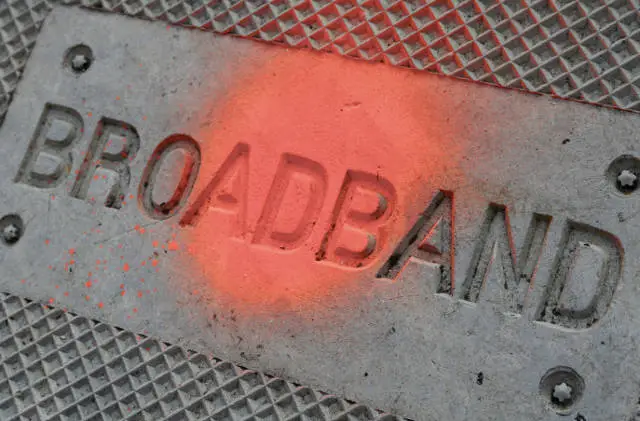There’s been a secret about the Isle of Wight that hasn’t been discussed publicly.
Those that did know about it spoke about it in hushed tones, because the impact on the future of the Isle of Wight would be so large.
The fear?
The fear? That the Isle of Wight would run out of Internet capacity, leading the Island to slide into digital obscurity as Internet-delivered services requiring ever-greater bandwidth would choke on the limited lines to the Island.
The Isle of Wight’s Internet access comes via the Mainland through fibre optics that lay on the bed of the Solent.
Reaching capacity
The thing was, they’d been there a long time and were running out of capacity. The day would come when there wouldn’t be enough capacity to give everyone on the Isle of Wight the speed of Internet connection they wanted, or needed.
Capacity that was in those fibres would be spread more and more thinly, until we would all be left running at a snail’s pace.
To give you an idea of how real this was, OnTheWight learnt a few years back that an Island company and been refused by BT to buy a leased line from the Mainland to the Island, because they feared running out of their own capacity.
It just wasn’t economic for BT to lay new fibres across the Solent, as they’re so darn expensive.
Calm be upon you
If you’re reading this and starting to feel tense – let us assure you, the fears that were there have, this week been alleviated.
Help has come from the strangest of sources – The MOD.
Huge, enormous, massive ships
If you didn’t know, the mothers of all UK Aircraft carriers will be operating out of Portsmouth harbour from 2017.
The HMS Queen Elizabeth is scheduled to pitch up in 2017, followed by HMS Prince of Wales in 2020. They will be the largest and most powerful warships ever constructed for the Royal Navy.
They’re sufficiently huge that the Solent had to be made deeper just to let them in.
Dredging
This dredging has been ongoing for a while, and anything lying at the bed of the Solent on the approach to Portsmouth Harbour will be at risk of being scraped up – including the Fibre Optic cables that connect the Isle of Wight to the Rest of the World.
They’ve planned ahead and, as of last week, two fibre optic cables, owned by BT, have been replaced.
Increased capacity
Along with the new cable comes what was so badly needed – increased capacity.
How much – Twice as much? Ten times as much? 1,000x? – just isn’t clear.
“Future proof” the “Next generation”
In the expected dry way of international telecoms company, BT wouldn’t be drawn on specifying quite how much more capacity there’ll be. We did get them to go as far as
The Island will get more capacity, which will help future proof the Island for the predicted increased in bandwidth demand for the current and next generation.
… which all sounds very promising.
With this BT also confirmed to OnTheWight plans for a third cable are well underway and will be finalised over the coming months. This cable would not be affected by any potential dredging.
If they’re snagged, MOD will pay
When the new fibre optic cables are laid, they lay on the surface before gravity drags them into the mud of the Solent. While they’re on the surface they are vulnerable to what’s described as ‘fishing activity’.
The Ministry of Defence have planned for this and are preparing to cover the cost of any potential damage.
The risk calculations have come up with it being possible that damage could happen up to twice in the first five years.
In a written statement, the Secretary of State for Defence, Michael Fallon described it as follows
Mr Fallon said,
“Surface-laying the new cable is not BT’s preferred solution as they consider the new cables will be more vulnerable to damage from fishing activity.
“BT require MoD to carry the liability for any repairs to the cables until they have naturally ‘self-buried’ into the seabed and forecast that the cables could be at risk to damage twice within the first five years and once in the following five.
“If cable repairs are necessary, each one is estimated to cost £360,000. The maximum contingent liability against the MoD is therefore £1,080,000.
“The duration of the liability will be 10 years from the date the new BT cables are installed, with this activity scheduled to complete in early December.”
A £1,000,000+ contingency fund has been set aside to cover any “possible damage to undersea cables” in the next ten years report the Portsmouth News.
Image: Gavin St. Ours under CC BY 2.0





